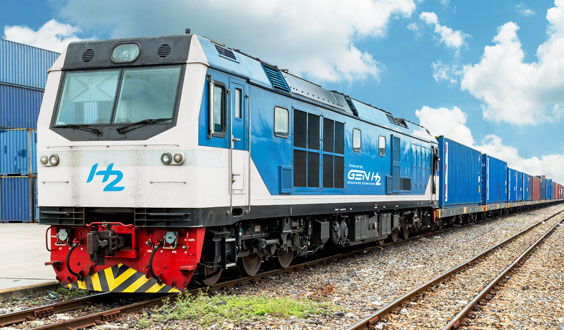Removing Carbon Emissions
How Hydrogen Will Eliminate Carbon Emissions From Trains
Every year in the US, the train industry hauls up to 1.7 billion tons worth of goods. This is an unbeatable number, but it comes at the cost of 3,419 million gallons consumed amongst all trains, with each individual train emitting 140 g/km of carbon and using up 470 amps worth of electricity annually. Besides ships and aircraft, this makes locomotives one of the biggest standalone producers of air pollutants in the world. With these numbers in mind, it’s vital that trains make a transition to clean energy. While it may seem like the solution is years down the line, it actually can happen now with hydrogen solutions.
The benefits of hydrogen are countless. Running at 3x better efficiency than fossil fuels, hydrogen is renewable, made on-site, zero-emission, and produces enough energy to power a system without the need for batteries. Exhaust from a hydrogen-powered engine comes out as water vapor, meaning that it is not only completely clean, but it puts water back into our atmosphere instead of harmful toxins.
The rewards hydrogen could bring trains is insurmountable. Cleaner locomotive fuel means a longer-lasting engine with less maintenance, not to mention that a renewable fuel source ensures trains could resume constant operation without concern of resource depletion. In short, hydrogen power will protect the earth’s natural resources while simultaneously improving the train industry.

Download our eBook to learn more about how GenH2 is revolutionizing the locomotive industry.
- 3x more efficient
- Zero emission
- Made on-site
- Scalable fuel cells
- Renewable
- Safe to use

